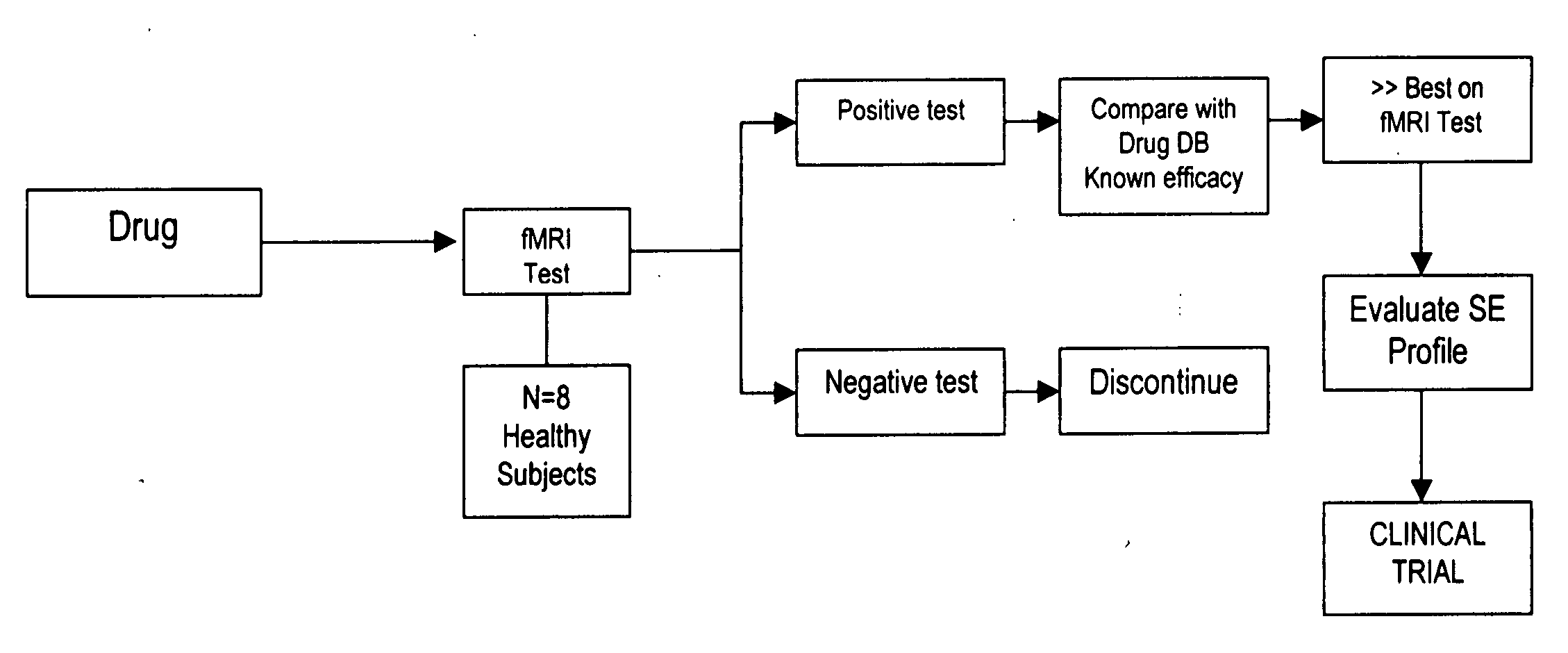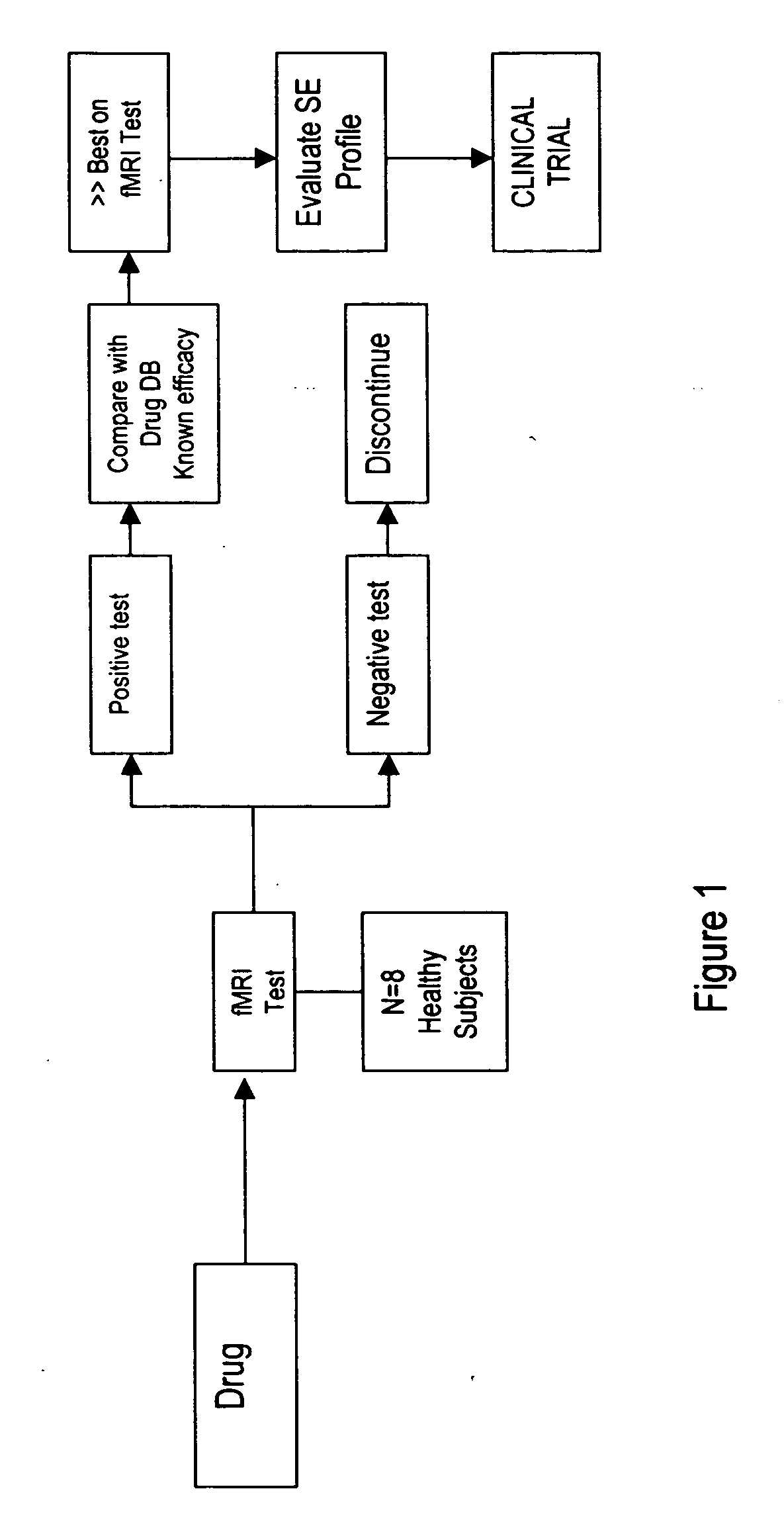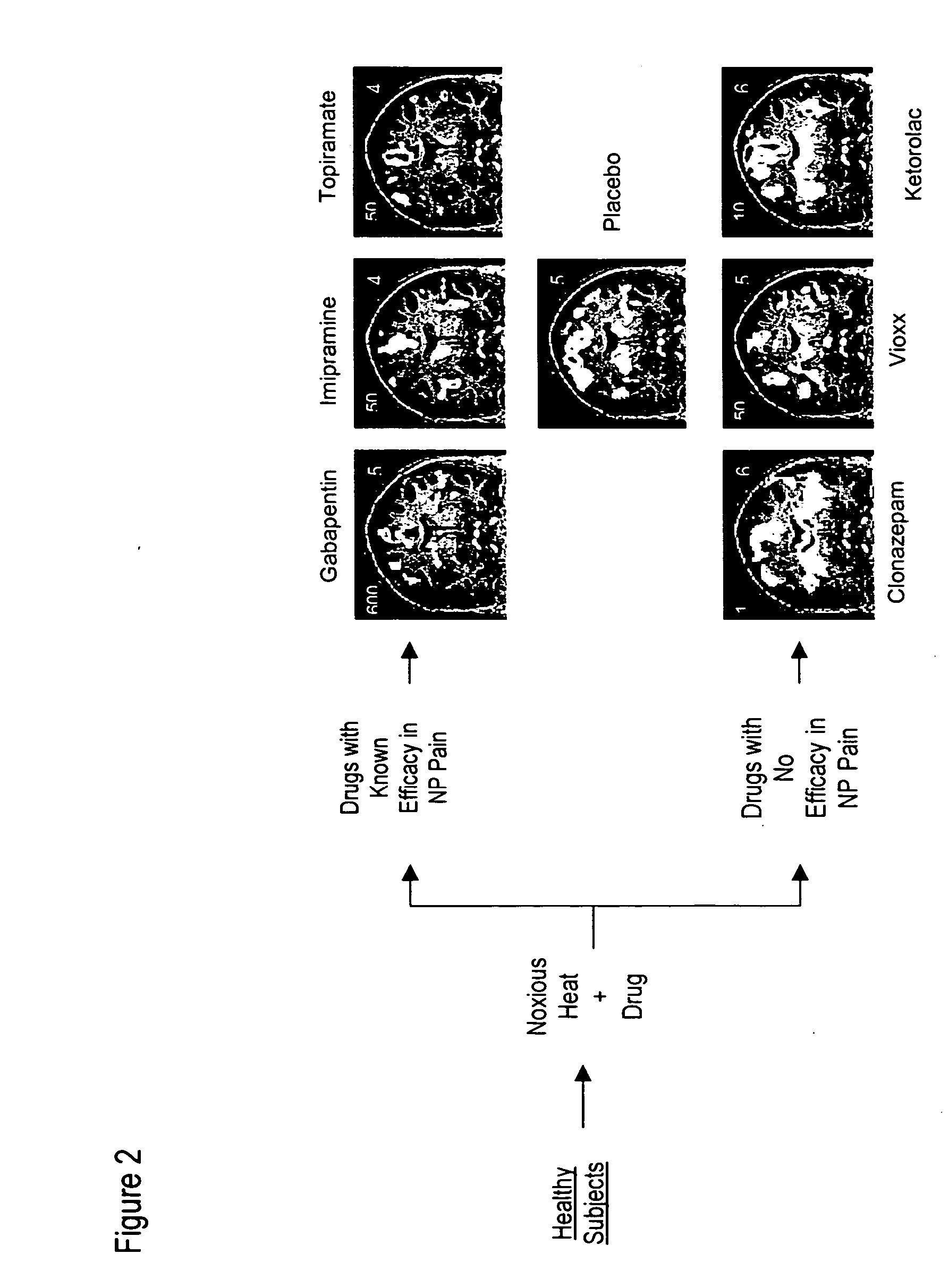CNS assay for prediction of therapeutic efficacy for neuropathic pain and other functional illnesses
a technology for predicting the therapeutic efficacy of neuropathic pain and other functional illnesses, applied in the field of functional illnesses, can solve the problems of exacerbated difficulty, difficult diagnosis of functional illnesses, and difficulty in determining the effectiveness of treatments
- Summary
- Abstract
- Description
- Claims
- Application Information
AI Technical Summary
Benefits of technology
Problems solved by technology
Method used
Image
Examples
example 1
Evaluation of a Therapeutic Compound
[0040] A series of therapeutic compounds were administered to healthy subjects, who were subjected to a thermal stimulus (>44° C.) after the therapeutic compound had been administered. The results are shown in FIG. 2. The top row of fMRI images indicates that drugs with known efficacy for neuropathic pain showed significant effect on CNS activation after the stimulus (i.e., overall decrease in fMRI activation). In contrast, the bottom row of images indicates that compounds that are not effective for neuropathic pain show no effect (i.e., no change in fMRI activation) or increased effect (i.e., increase in fMRI activation) compared with the placebo response (middle image).
[0041]FIGS. 3A and 3B show how the methods of the invention provided quantitative analysis of therapeutic compounds as opposed to subjective reporting by the subject. There was no difference between the subjective report for compounds that are effective for neuropathic pain and ...
example 2
Use of Rats as a Model for Efficacy in Humans
[0042] The methods of the invention may employ non-human mammals, e.g., rats, as the subjects, in which experimental therapeutic interventions are evaluated. FIG. 4 shows that the thermal response of rats was similar to that of humans for specific regions known to be involved in acute pain. These data provide evidence that rats may be used as a surrogate for humans in the methods of the invention. FIG. 5 shows the general CNS activation in rats following the use of a therapeutic compound with known efficacy (gabapentin) for neuropathic pain versus a compound with no efficacy (clonazepam). FIG. 6 shows the differences in CNS activation in more detail for gabapentin versus placebo in rats following heat stimulus. The left panels show serial coronal slices through the brain. The overall level of activation was decreased in the gabapentin group compared to the placebo group. The right panels show differences in activation in specific circuit...
example 3
Application to Psychiatric Disorders
[0044] The methods of the invention may also be used to evaluate therapeutic interventions or develop markers for psychiatric disorders, e.g., depression. This approach is illustrated in FIG. 8. Pain and depression share some common circuitries. A notable exception is primary sensory systems (circled), which are not involved in depression. In one method, an acute pain stimulus may be used to activate regions of the brain that overlap in acute pain and depression to evaluate different classes of interventions that may have improved effects in depression alone or as analgesics. In another method, a stimulus that activates the circuitries involved in a psychiatric disorder, such as depression or anxiety, may be employed to evaluate therapeutic interventions for the disorder in healthy subjects or subjects suffering from the disorder. These methods are also broadly applicable to other psychiatric disorders, such as addiction and post traumatic stress...
PUM
| Property | Measurement | Unit |
|---|---|---|
| temperature | aaaaa | aaaaa |
| mechanical force | aaaaa | aaaaa |
| functional magnetic resonance imaging | aaaaa | aaaaa |
Abstract
Description
Claims
Application Information
 Login to View More
Login to View More - R&D
- Intellectual Property
- Life Sciences
- Materials
- Tech Scout
- Unparalleled Data Quality
- Higher Quality Content
- 60% Fewer Hallucinations
Browse by: Latest US Patents, China's latest patents, Technical Efficacy Thesaurus, Application Domain, Technology Topic, Popular Technical Reports.
© 2025 PatSnap. All rights reserved.Legal|Privacy policy|Modern Slavery Act Transparency Statement|Sitemap|About US| Contact US: help@patsnap.com



